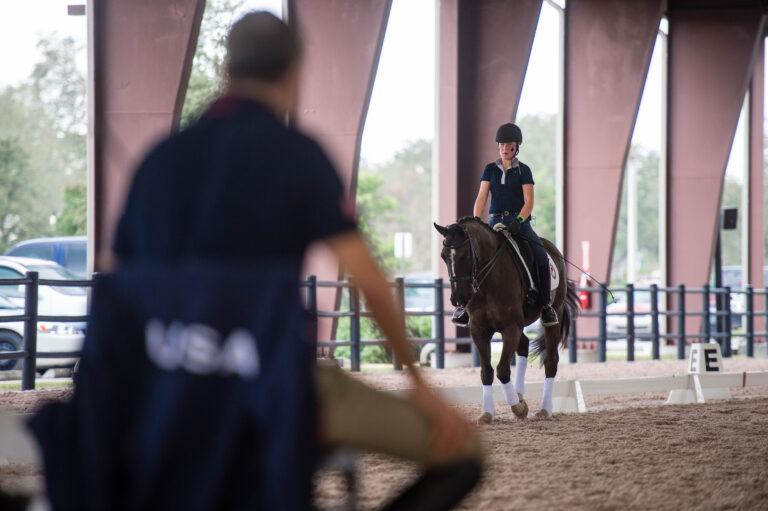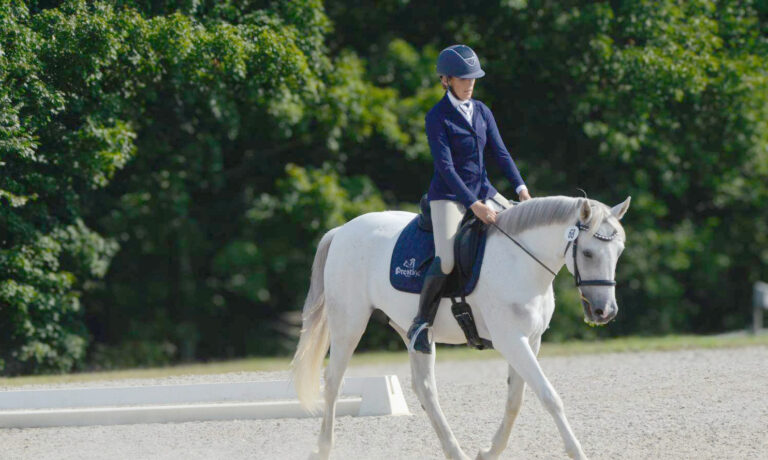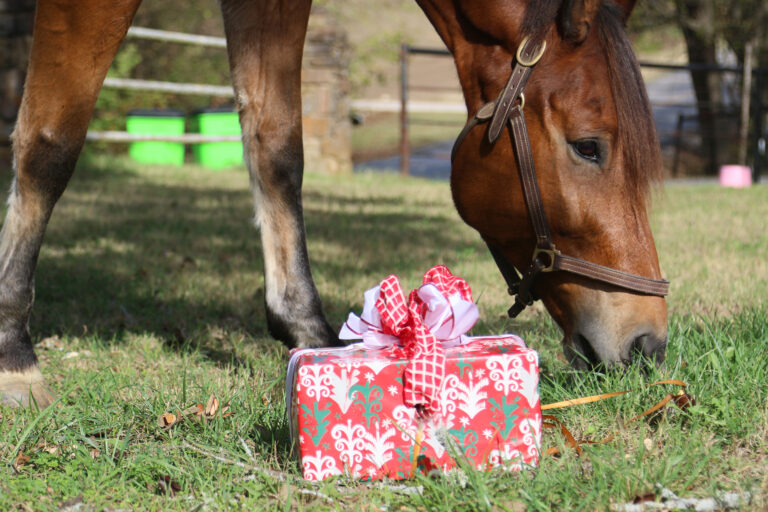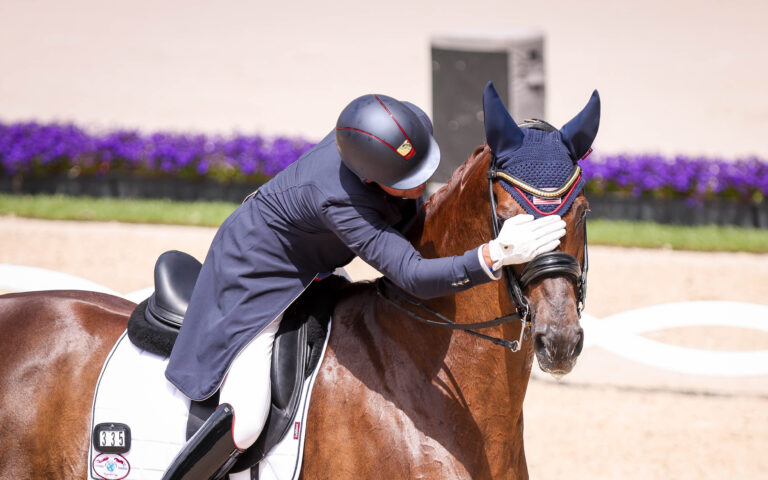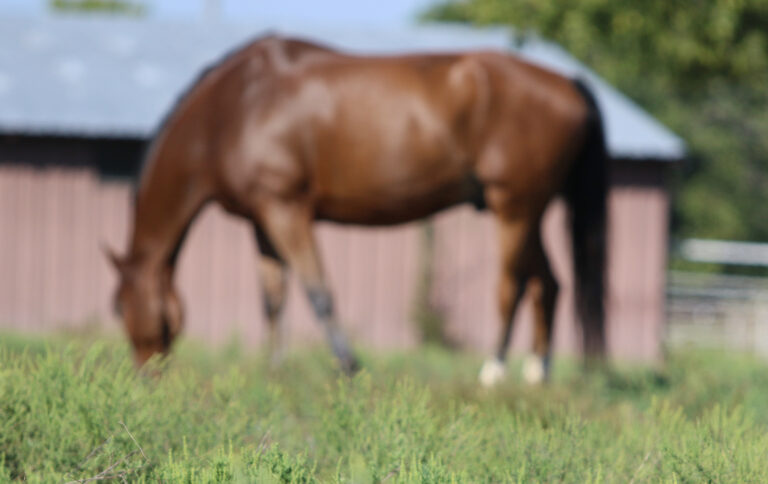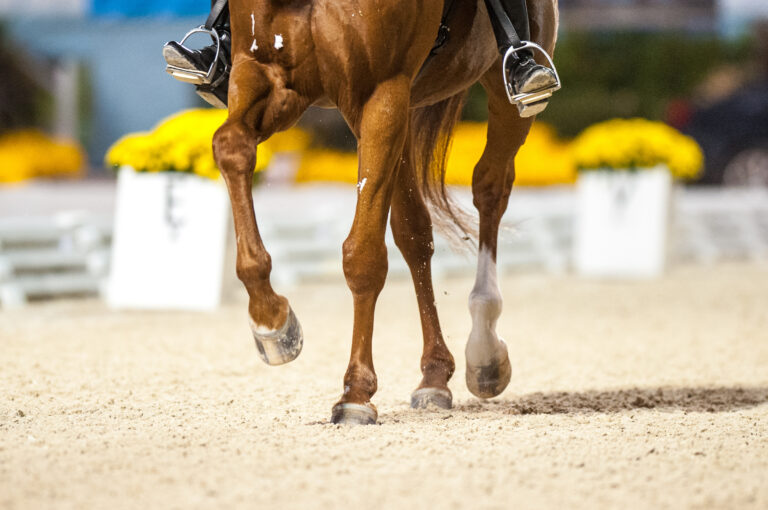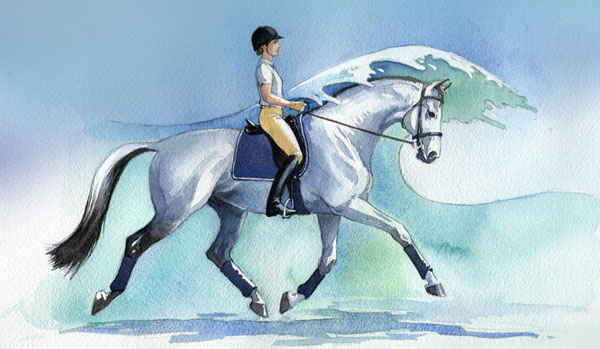
“So what made you want a Lipizzan?”
If I had a $5 bill for each time I’ve been asked that since buying my Lipizzan mare, Arcola, I’d have a significant chunk of my next show fees already paid. It isn’t always a loaded question. I get that. Sometimes it’s simply asked by curious family members and friends. They’re the non-horsey people in my life for whom “Lipizzan” conveys images of uniformed riders aboard shining white stallions, dancing and leaping together. It’s a perception based on what they’ve seen on PBS, in an old Disney movie or, most likely, in the form of a glitzy touring show that visited their town. “Oh, I know those horses,” they’ll say. “I saw their show as a kid. You do that? Impressive!”
In those situations, I appreciate their interest but tell them the showing I do is called Training and First Level dressage and probably isn’t what they’re imagining. I explain that this is the foundation for executing more complicated and entertaining moves in the future. I stress the fact that this takes time.
But when the question “What made you want a Lipizzan?” comes from a fellow equestrian who knows what Training and First Level dressage entails and is as immersed in it as I am, it can come across as slightly accusatory. I don’t know whether it’s the timing or the tone of the question. But many times there is the hint of a suggestion that there’s something not quite right about my breed choice.
I suspect what they’re really asking is why. Why would someone who is actively attempting to move up the levels, with a decent horse-shopping budget and in regular lessons with a great trainer, set himself up for a conformational challenge to overcome from the start? Why, they wonder, wouldn’t he just buy a nice warmblood? It’s so much easier to succeed in the show ring on a horse that is a naturally high-scoring mover, a horse that’s bred for the job of modern dressage. Lipizzans, they might presume, are cavalry mounts held over from another age and time.
The implication, I sometimes feel, is that those of us who opt to learn and compete on baroque breeds have attached so much romantic significance to our partners that we’re viewing this warmblood-dominated sport through a venetian curtain. Medieval fantasy rules, my dressage-show friends may be suggesting. Honest evaluation of the discipline takes a back seat.
“I feel 450 years of living history under my fingers whenever I touch her hide.” That’s something a Lipizzan owner shared, shortly after I bought my mare. Is that the kind of answer my fellow competitors expect from me? Or maybe something along the line of, “I swell with pride as I imagine myself performing our passage before the crowned heads of Austria in the Winter Palace.” Perhaps they think I’m making a classical statement of some kind. I sometimes sense that, at the very least, they’d like me to confirm the realization of a romantic equine ideal. As one of my barnmates, who recently bought a P.R.E. gelding put it, “Baroque horses are just different. They’re living works of art.”
I can’t honestly say that any of those perceptions drove my own horse search. I do appreciate that, for many Lipizzan and other baroque horse owners, they’ve been enamored with their preferred breeds since long before they ever bought one or more of them. But a longtime baroque attraction, however common it may be, doesn’t figure into my answer. The simplest truth is that I wanted a dressage-capable horse that was shorter than most warmbloods, sturdy, smart and generally sound and tractable. I wanted to have fun and I wanted to feel safe.

As a male in my early 50s who’s dabbled in dressage lessons since the mid ’90s and who showed for the first time in 2013, I was horse shopping with some defined short-term goals in mind. I wanted to find a mount on which to earn my USDF bronze medal and to try to qualify for regional and state championships as I progress up the levels. I wanted to participate in clinics and to put together a freestyle, to show more frequently and maybe compete out of state. But after severely fracturing my tibia in May 2013, coming off my huge and complicated Hanoverian just weeks after making our Training Level debut, I wasn’t interested in pursuing my goals on another large and big-moving horse.
After selling the Hanoverian and rehabbing my leg, I began online horse shopping in earnest, early in the fall of 2013. I applied height, age, price and temperament parameters to my searches that led to a lot of baroque types popping up in my results. I looked into several different breeds and crosses and scoured the Lipizzan listings with increasing curiosity. I contacted the handful of Lipizzan riders and enthusiasts I knew, seeking their feedback and I liked what I heard.
“They have almost a built-in metronome,” one breeder told me. “What you sacrifice in flashy gaits, they more than make up for in balance and regularity. They’re old souls.” Another acquaintance raved about the Lipizzan brain, their willingness to try and their loyalty. I heard praises for the breed’s reputation for soundness and for having great feet. And, overall, Lipizzan prices were more reasonable than some of the other breeds I was considering.
The negatives? Frequently their height. I wanted something in the 15.2- to 16-hand range. But many of the Lipizzans popping up for sale were much shorter, even as small as 14.2 and 14.3. Another issue I encountered while shopping was difficulty finding a suitable gelding. I also wanted a young horse with a good start under saddle. Because I didn’t have much experience developing green horses, I knew that my trainer, Cyndi Jackson, would be very involved in bringing the horse along.
Yet as I began searching, there appeared to be only Lipizzan mares in the age and training range I was seeking. I wasn’t sure I wanted to deal with a mare. Ungelded colts were available, so were some aged males. I was unwilling to take the risk with any of those.
Because Lipizzans are rare and the market is limited, I expanded my search to include both genders. Eventually, I flew from my home in Arizona to Tempel Lipizzans, outside of Chicago, to try two of its youngsters for sale. The one I was most interested in was Arcola, a 15.3-hand 2007 mare with an extremely pronounced forehead. She looked to be a good mover and a steady, nonspooky type in her videos.

I tried four available horses on that trip, but Arcola was the only one I rode twice. I immediately felt connected to her. I liked her calmness. We seemed to have a similar understanding of the aids and the rein connection. I was still in a knee brace at the time and felt very safe on her broad back. I tried enough sitting trot to burst out laughing at how easy she was to sit, especially compared to the horse on which I’d smashed my leg six months earlier. To say I was smitten would be an understatement. She felt like mine.
But I wasn’t immediately convinced. I’d set out to find something reliable and sturdy, and she met the criteria. I loved her as an individual, but at that point, I balked due to my unfamiliarity with the breed. A voice in my head worried that baroque gaits weren’t competitive. Maybe her back was too long, her legs too short, her noble profile too extreme. I flew home and discussed the trip with my partner. We decided together that her three good gaits and my sense of security trumped dynamic movement. My trainer agreed. We made an offer, ordered a prepurchase exam and in December 2013, “Lola” came to Arizona to be my show horse.
In my first real show season, with Cyndi Jackson’s help, Lola and I qualified for the 2015 Region 5 Championships at Training Level. We also qualified for the 2015 Arizona State Championships at both Training and First Levels. We’re working toward qualifying at First Level for regionals, and are preparing a First Level freestyle to show this fall. We’ve ridden in clinics with Jan Ebeling, Christine Traurig, Niki Clarke and Conrad Schumacher. Lola has been a willing and capable partner in every way. Cyndi is convinced that, as a team we can realistically aim for a USDF medal level higher than bronze.
As it turns out, I’ve become an eager breed proponent. Lola has so many wonderful qualities that I want to share the Lipizzan joy with others. I’ve gotten very involved with our registry and returned to Tempel Farms last fall for the annual USLF Symposium. I carry a USLF banner and brochures with me to shows and clinics and I’ve done some sleuthing among available Lipizzans on behalf of horse-shopping friends and acquaintances. Ambassadorship was something I never anticipated, but its rewards far outweigh any extra pressure I might feel when we’re out and about.
So there you have the simple answer to why I chose a Lipizzan. I wasn’t trying to fulfill a childhood dream or play out a Spanish Riding School fantasy. I had no romantic attachment or historical ideal in mind. I certainly did not intend to establish myself as somehow more classical than other dressage riders by coming down centerline on a Lipizzan. Yet here I am, taking lessons, competing regularly and enjoying all of the innate qualities that this noble breed possesses. Ask me, instead, what makes me want to keep my Lipizzzan, and I can go on for hours.
I wanted something shorter than my previous horse. I wanted sturdy. I wanted a good brain and good feet. I wanted to progress in dressage at a steady pace on a willing partner. I wanted to participate in lessons, shows and clinics without worrying about behavioral issues. My only intention was to learn, feel secure and have fun. Lola is everything I hoped for and more.


